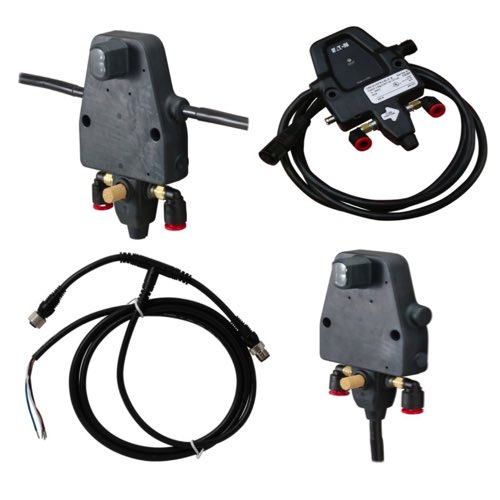Conveyor Sensors

RSP Supply carries a full line of Eaton conveyor sensors designed to support reliable operation and performance of conveyor systems in industrial environments. Available in diffuse reflective and polarized retroreflective configurations, these sensors play a critical role in detecting product presence, verifying alignment, and supporting smooth material flow across manufacturing, packaging, and logistics applications.
Conveyor sensors are commonly used to confirm whether products are present and correctly positioned on the conveyor belt before moving to the next stage of the process. Proper alignment detection helps prevent jams, product damage, and mechanical wear, while supporting consistent throughput and safe operation. These sensors are also used to monitor conveyor belt speed, ensuring the system operates within specified parameters and adjusts appropriately to load changes or process demands.
Eaton conveyor sensors are engineered to perform reliably in a wide range of environmental conditions, including areas with varying ambient light. Additional capabilities such as slip detection, distance measurement, and system diagnostics support proactive maintenance and operational optimization. Many models offer alarm functions and data output features that help identify performance trends, detect issues early, and reduce unplanned downtime.
FAQs
Q: What types of conveyor sensors are available from Eaton?
Eaton conveyor sensors are available in diffuse reflective and polarized retroreflective types to support different detection distances and application requirements.
Q: What is the primary function of a conveyor sensor?
Conveyor sensors detect the presence, position, and movement of products on a conveyor belt to ensure proper alignment, spacing, and system operation.
Q: Can conveyor sensors monitor belt speed?
Yes, conveyor sensors can be used to monitor belt speed and help maintain optimal conveyor performance and product handling.
Q: Are conveyor sensors suitable for environments with changing light conditions?
Yes, many conveyor sensors are designed to compensate for ambient light variations, allowing reliable operation in indoor and outdoor applications.
Q: What additional features do modern conveyor sensors offer?
Modern conveyor sensors may include slip monitoring, distance measurement, alarm functions, and data collection capabilities for performance analysis and maintenance planning.
Why Buy Eaton Conveyor Sensors from RSP Supply
RSP Supply provides a dependable selection of Eaton conveyor sensors designed for accurate detection and monitoring in industrial conveyor systems. Our offerings support efficient material handling, improved system reliability, and reduced downtime. Customers rely on RSP Supply for quality sensing solutions, clear technical information, and products engineered to perform in demanding operational environments.

